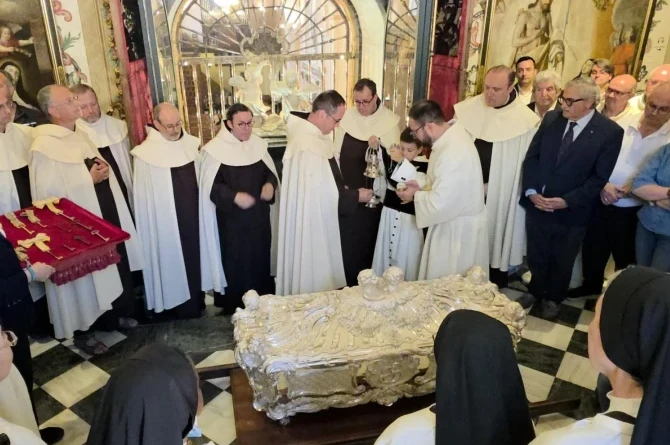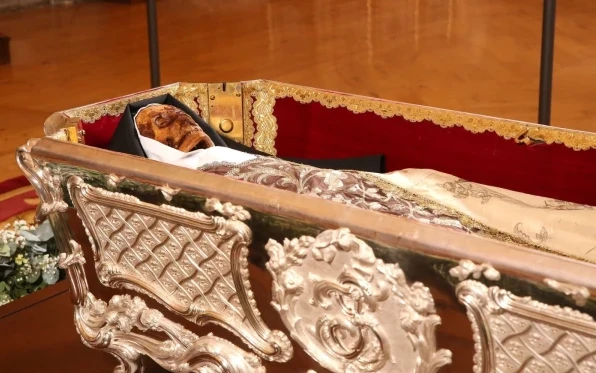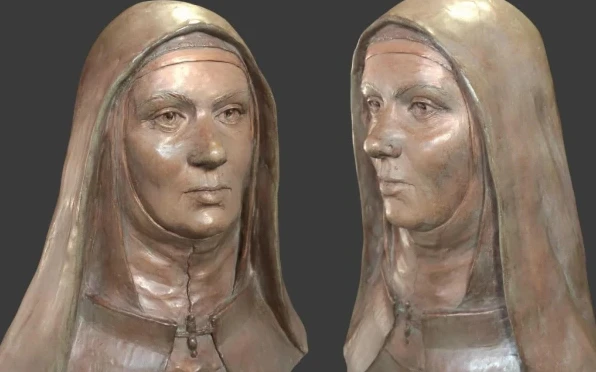More than 90,000 people venerated body of St. Teresa of Ávila during public exposition

 The case containing the body of St.Teresa of Ávila after an extraordinary public exposition in 2025. / Credit: Photo courtesy of Discalced Carmelites Iberian Province
The case containing the body of St.Teresa of Ávila after an extraordinary public exposition in 2025. / Credit: Photo courtesy of Discalced Carmelites Iberian Province Madrid, Spain, May 28, 2025 / 18:11 pm (CNA).
Approximately 93,000 faithful venerated the body of St. Teresa of Jesus (Ávila), which was publicly exhibited May 11–25 for the third time in four centuries in the small town of Alba de Tormes, Spain.
The saint’s remains were returned to the silver case placed at the center of the altarpiece of the Basilica of the Annunciation in the Castilian city where the Carmelite reformer died.
Eight Discalced Carmelite friars from different convents carried the case, preceded by others holding the 10 keys required to open it, to the accompaniment of the municipal band.
Pilgrims of different nationalities streamed in for this rare occasion to venerate the saint following Pope Francis’ canonical recognition of the body, which took place in its first phase in August 2024.
In February, the body was transferred to a temporary case until it was transferred to the one that contained the saint’s body during the public exposition, which had only previously taken place in 1760, for seven hours, and in 1914, for one day.

The Discalced Carmelites order explained from the outset that the intention behind this extraordinary occasion was “to bring pilgrims closer to Jesus Christ and the Church, to evangelize all visitors, and [to foster] greater knowledge of St. Teresa of Jesus.”
The canonical recognition of the saint’s remains made possible a reconstruction of her face based on anthropomorphic and forensic study, historical testimonies, and descriptions of her from the time in which she lived.

The scientific team that studied the body of St. Teresa of Jesus noted in a report that it is in an “extraordinary state of preservation” despite the passage of time. They also observed that the nun may have suffered from osteoporosis, bilateral osteoarthritis of the knee, and a bone condition below both heels associated with pain.
This story was first published by ACI Prensa, CNA’s Spanish-language news partner. It has been translated and adapted by CNA.





